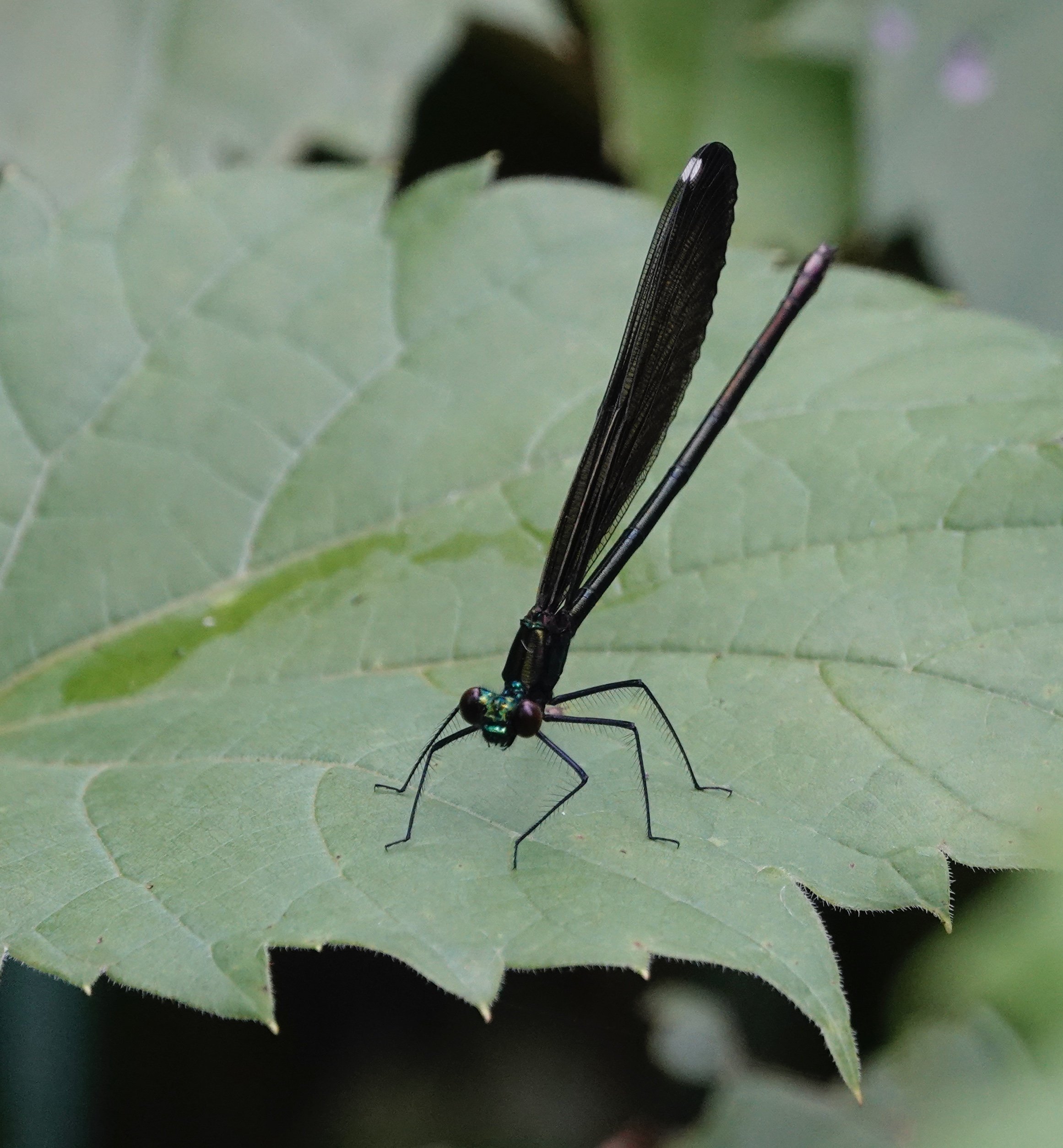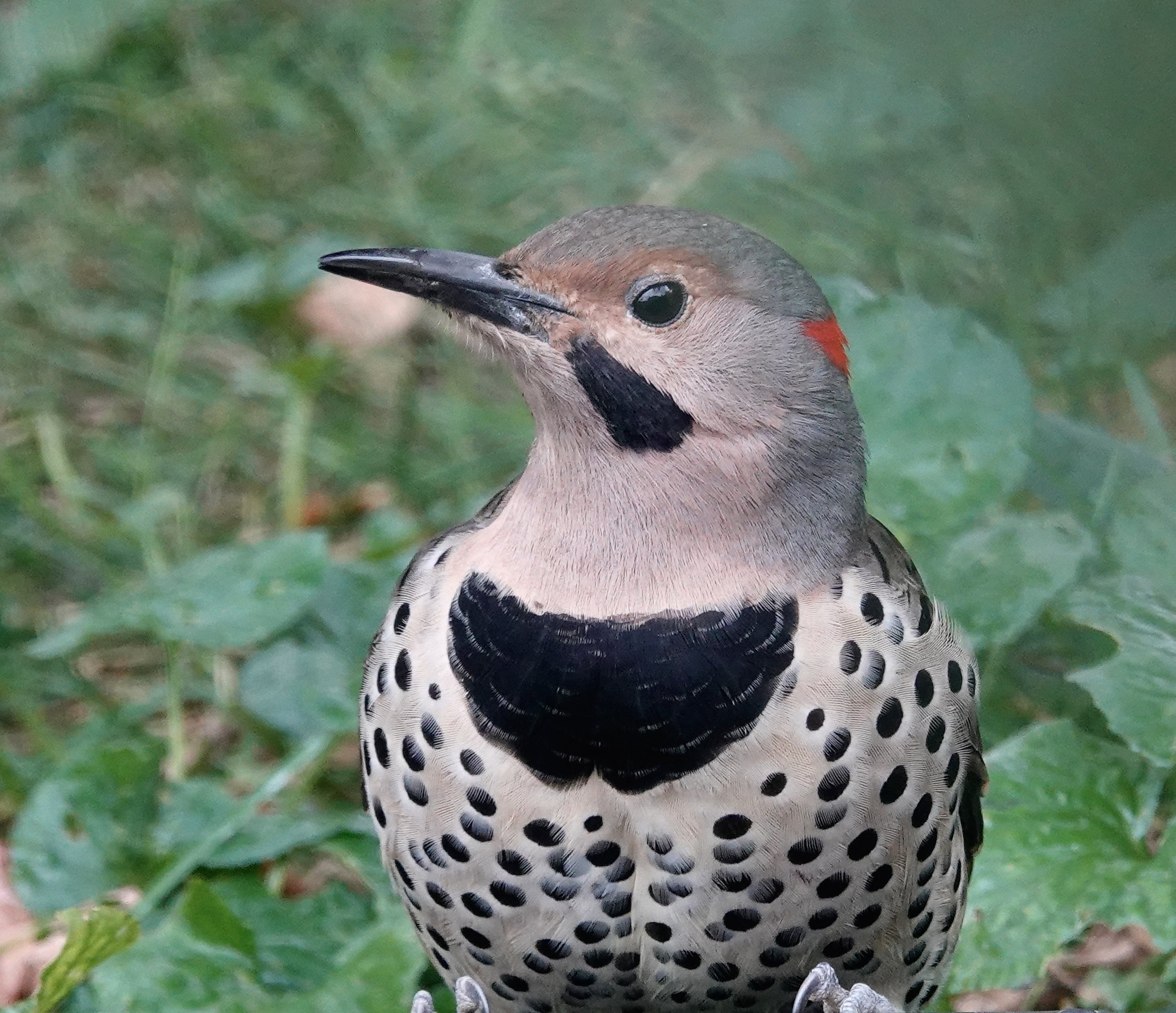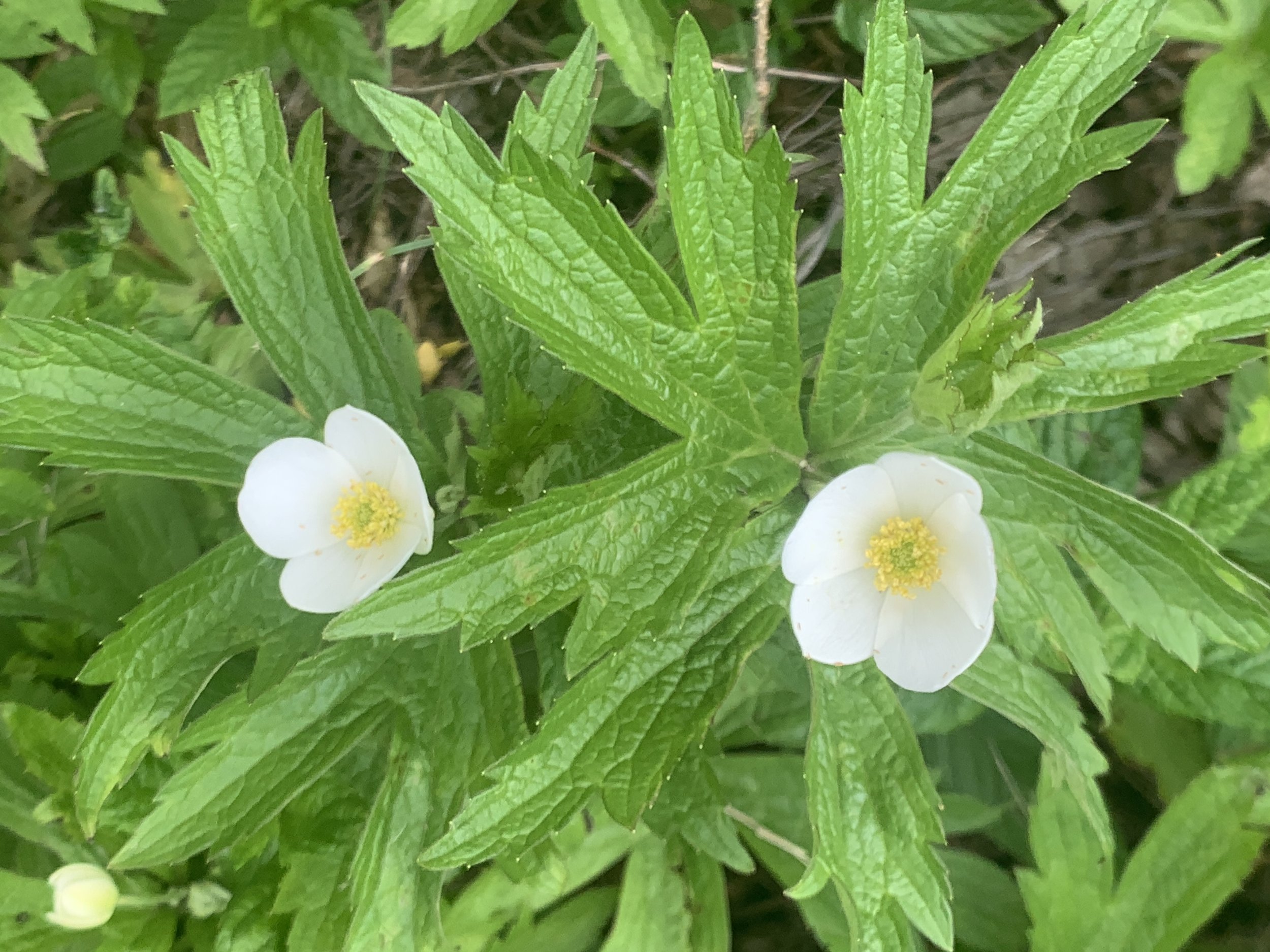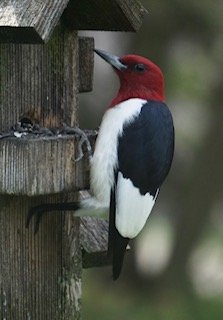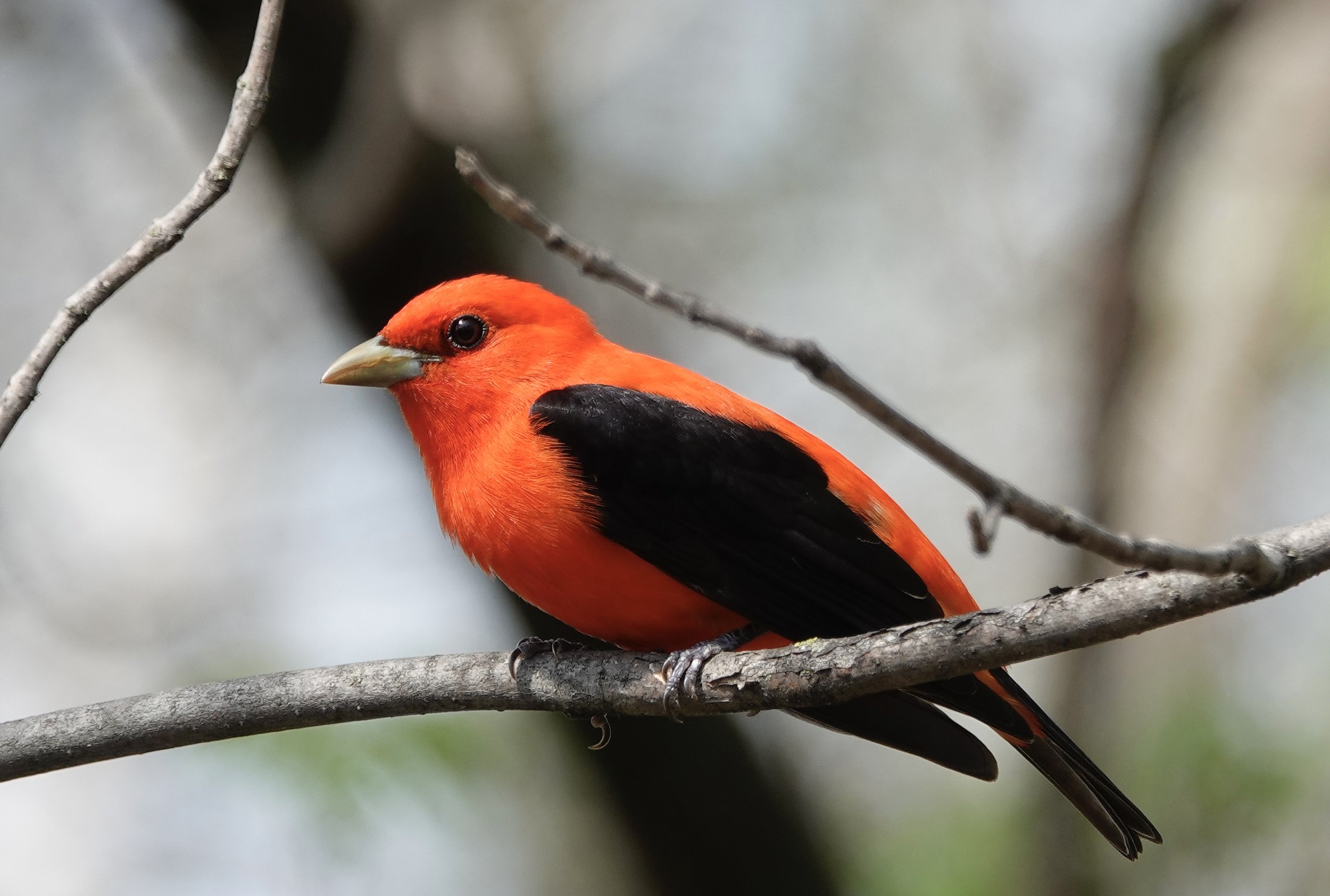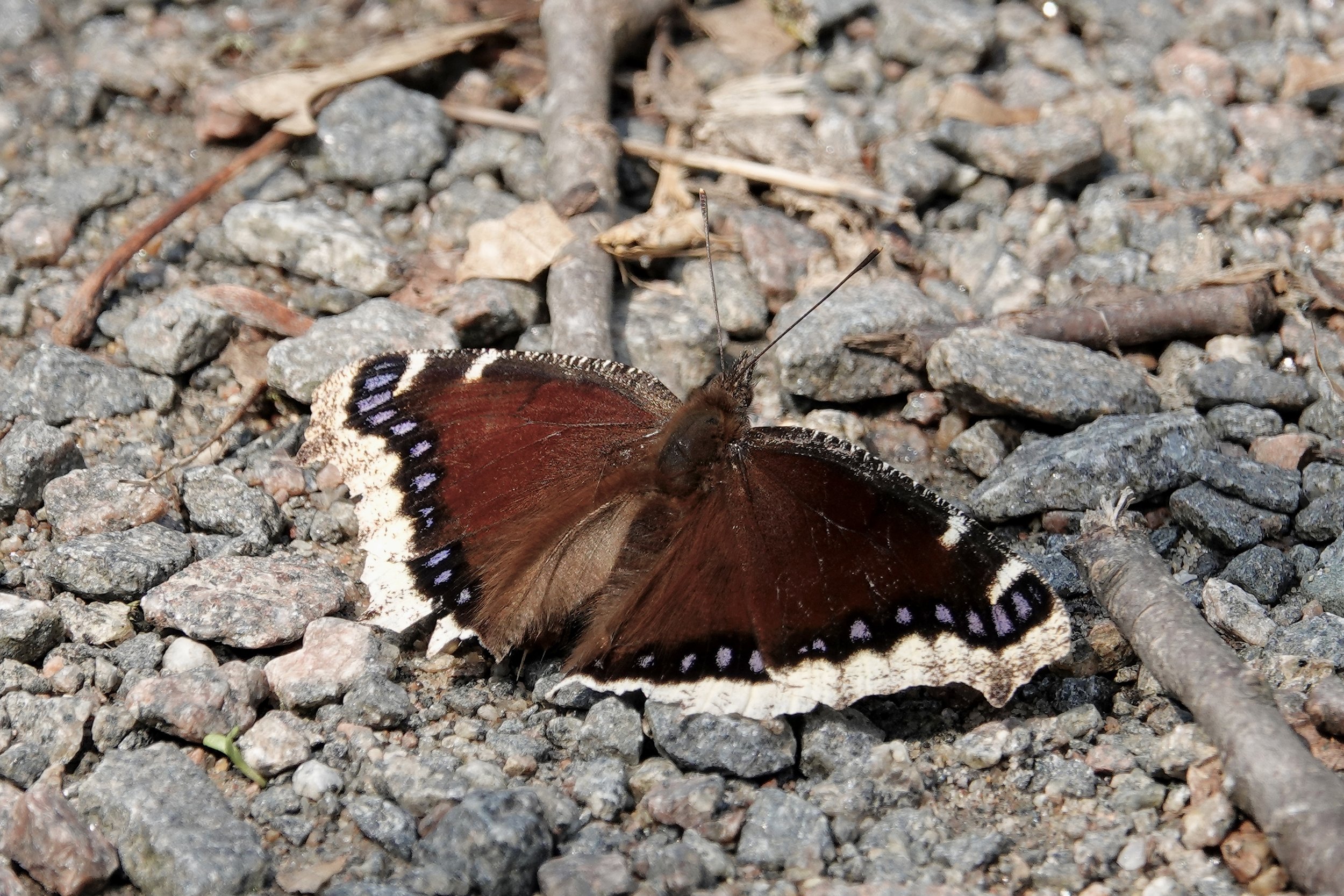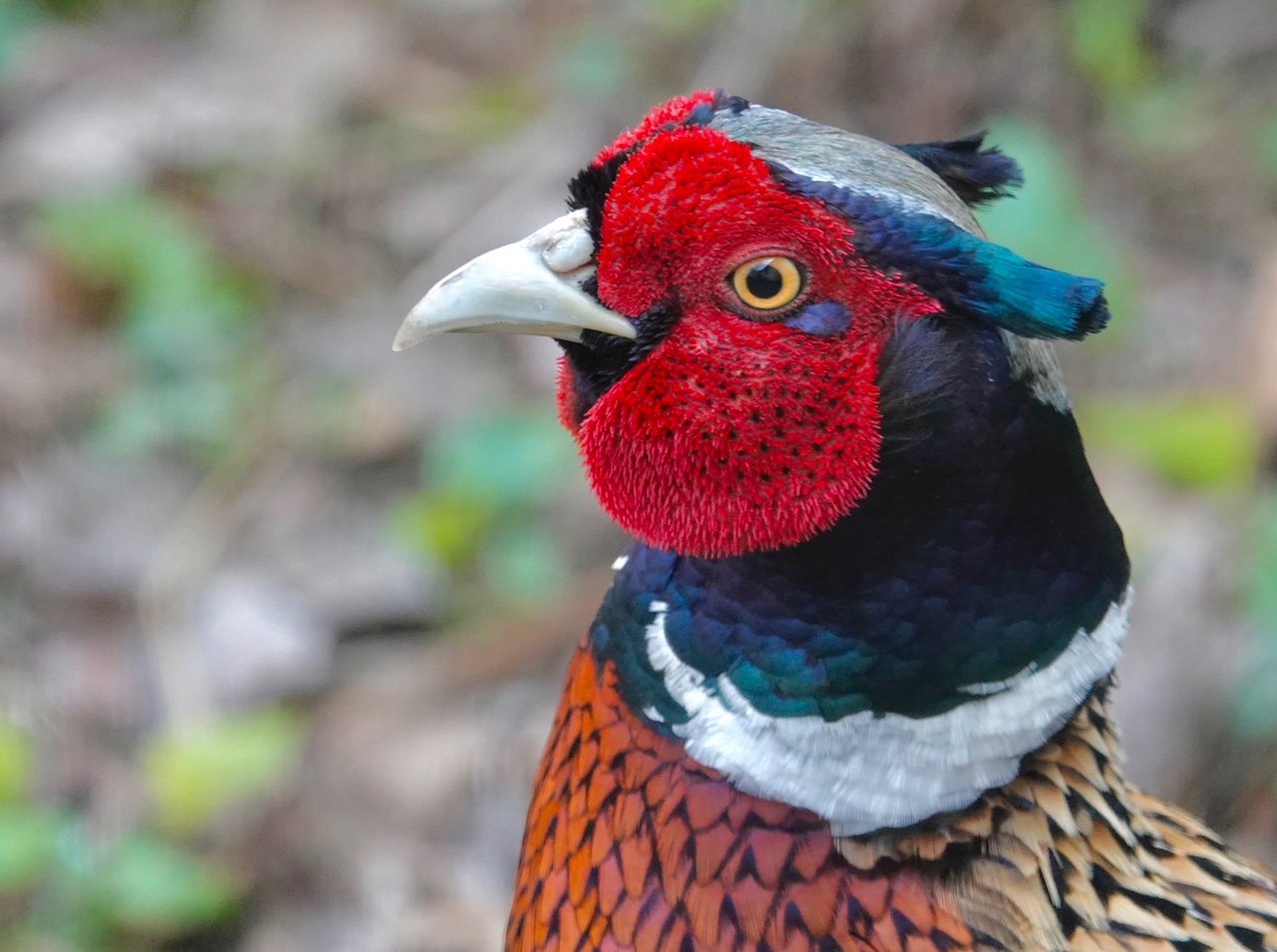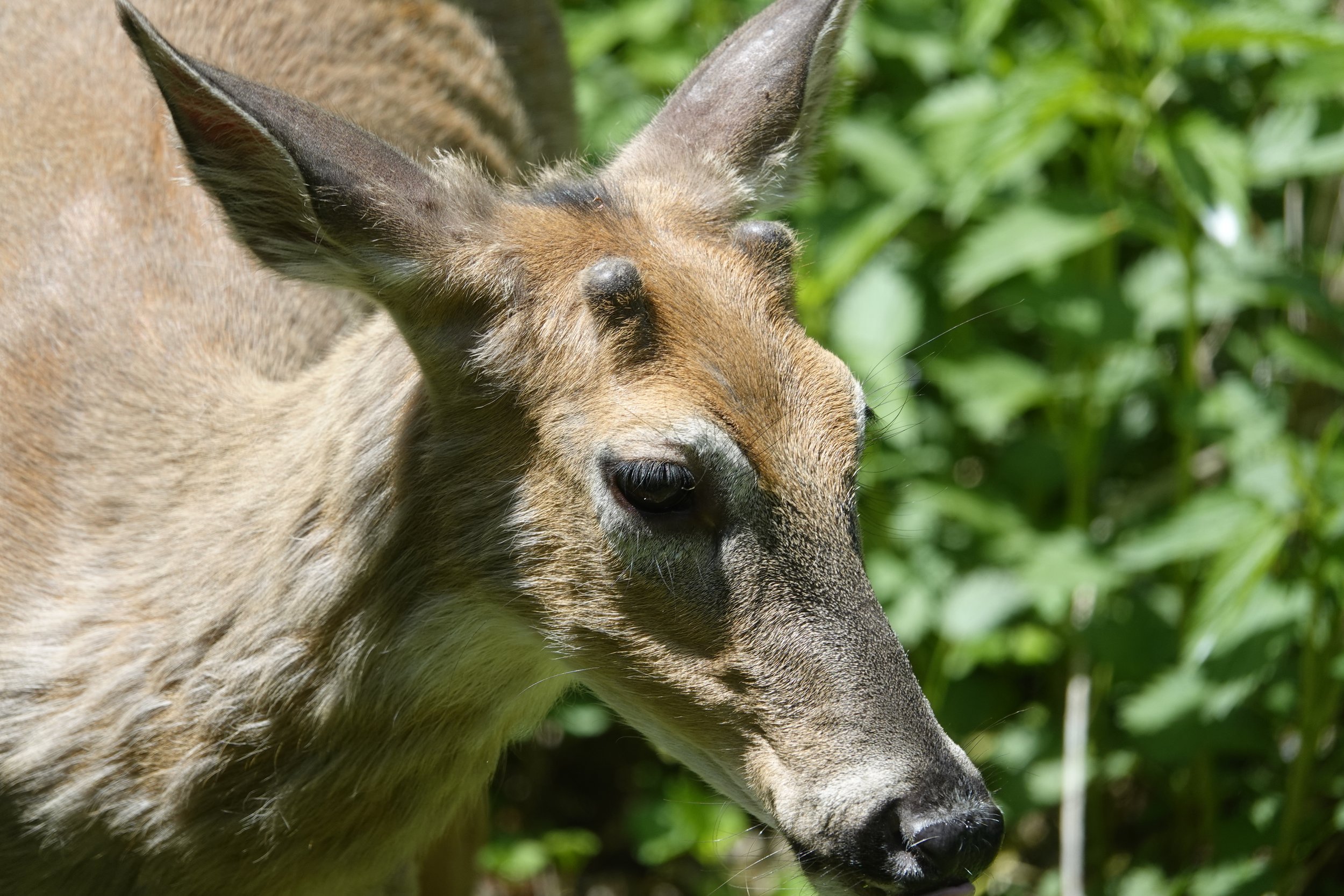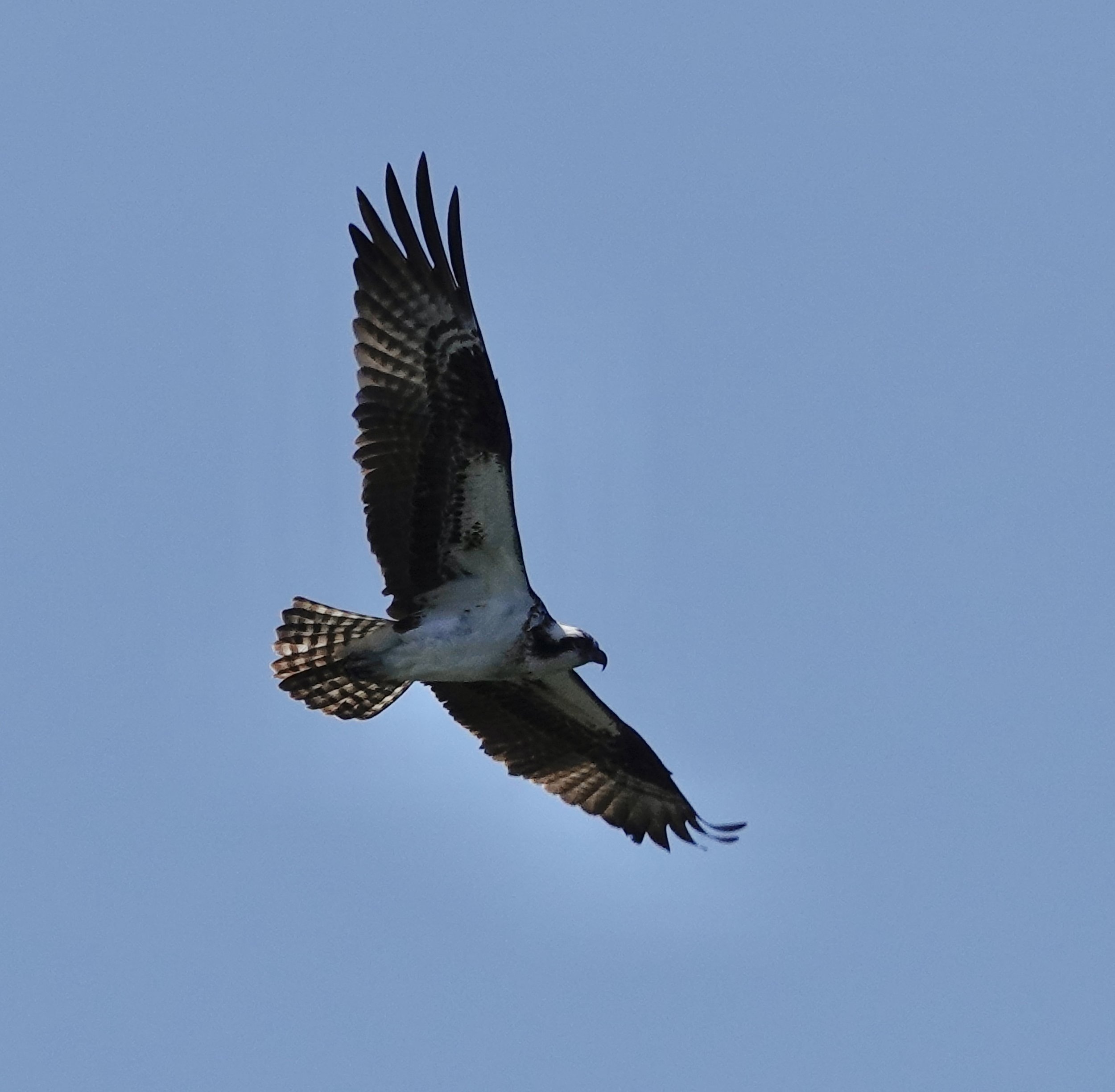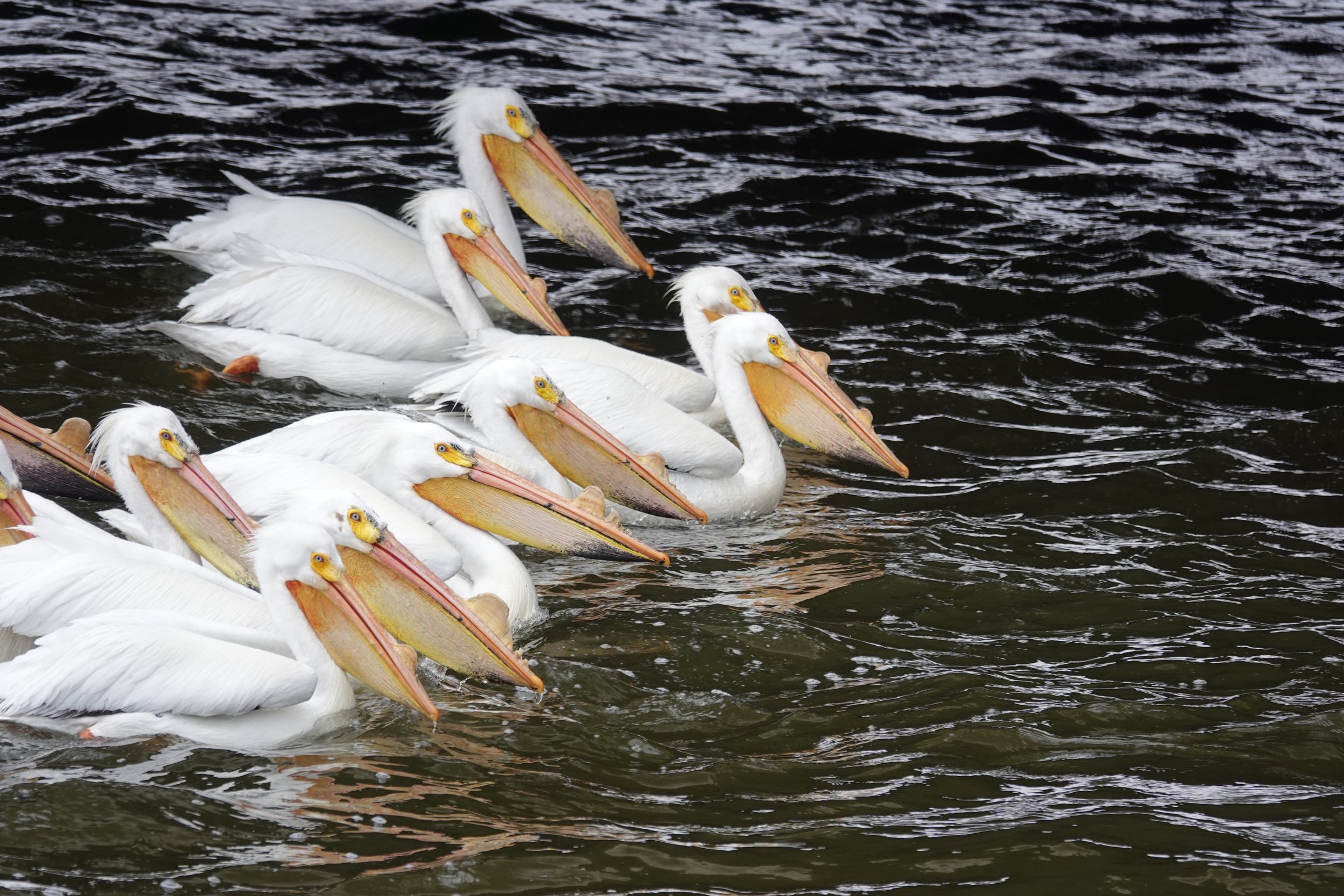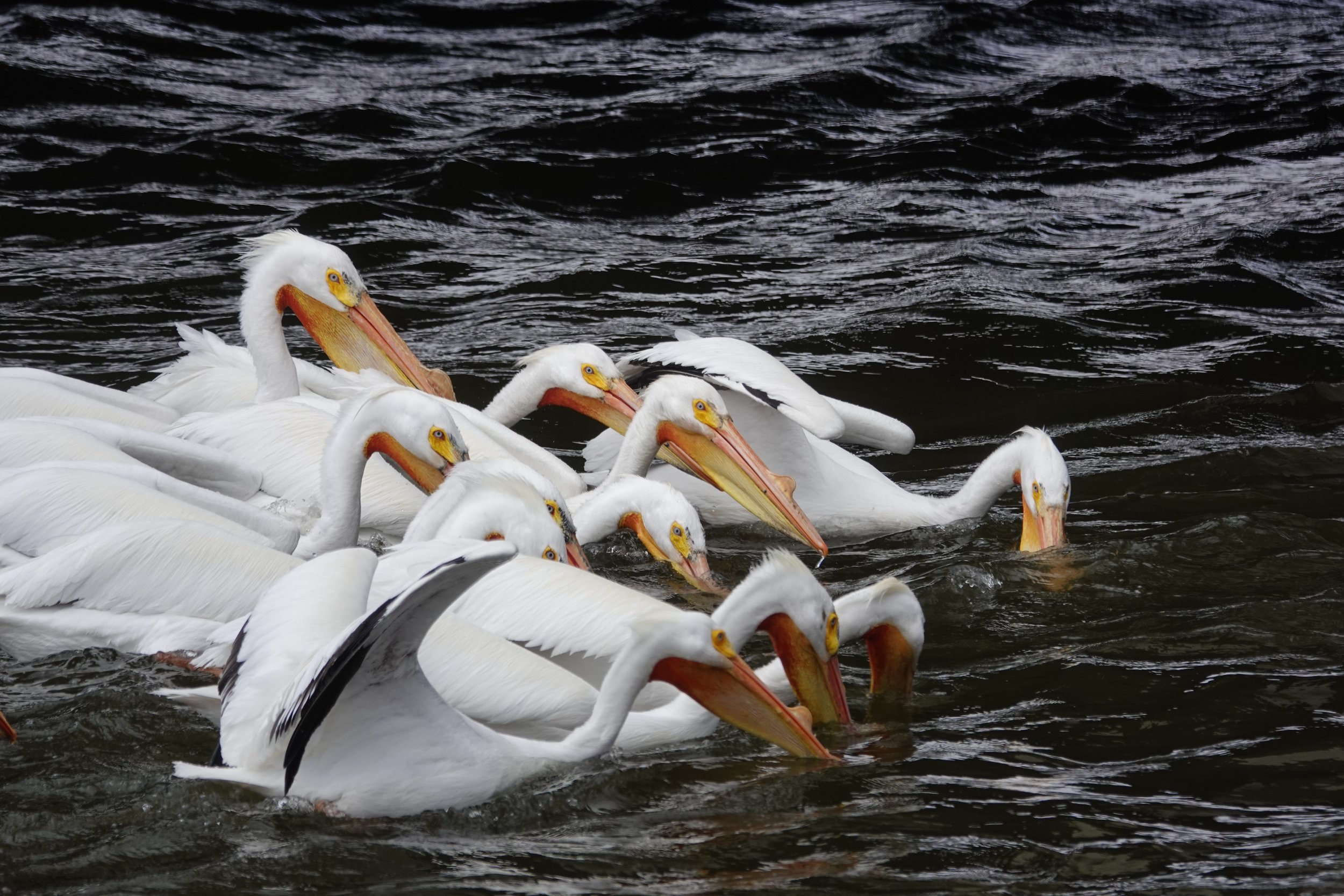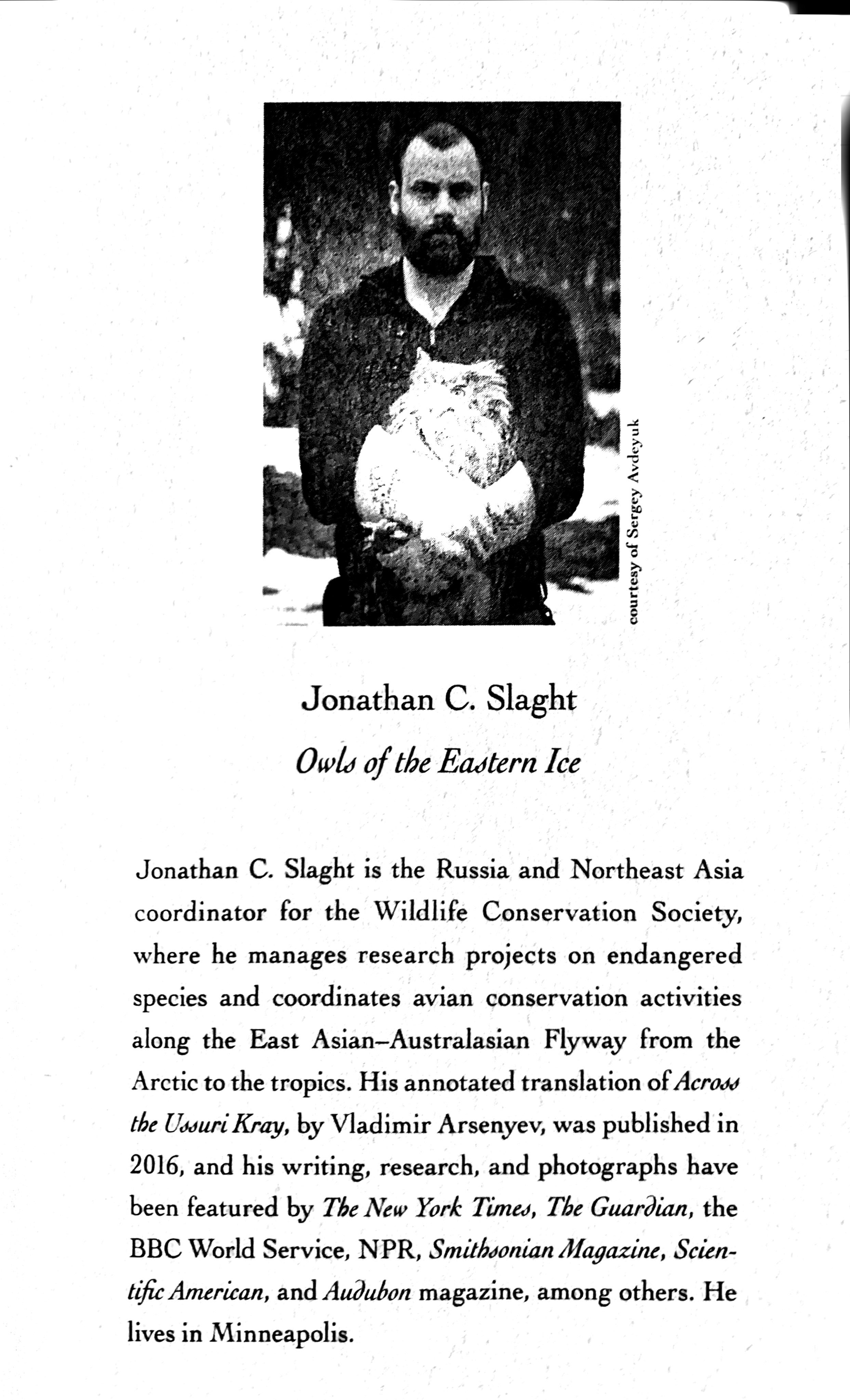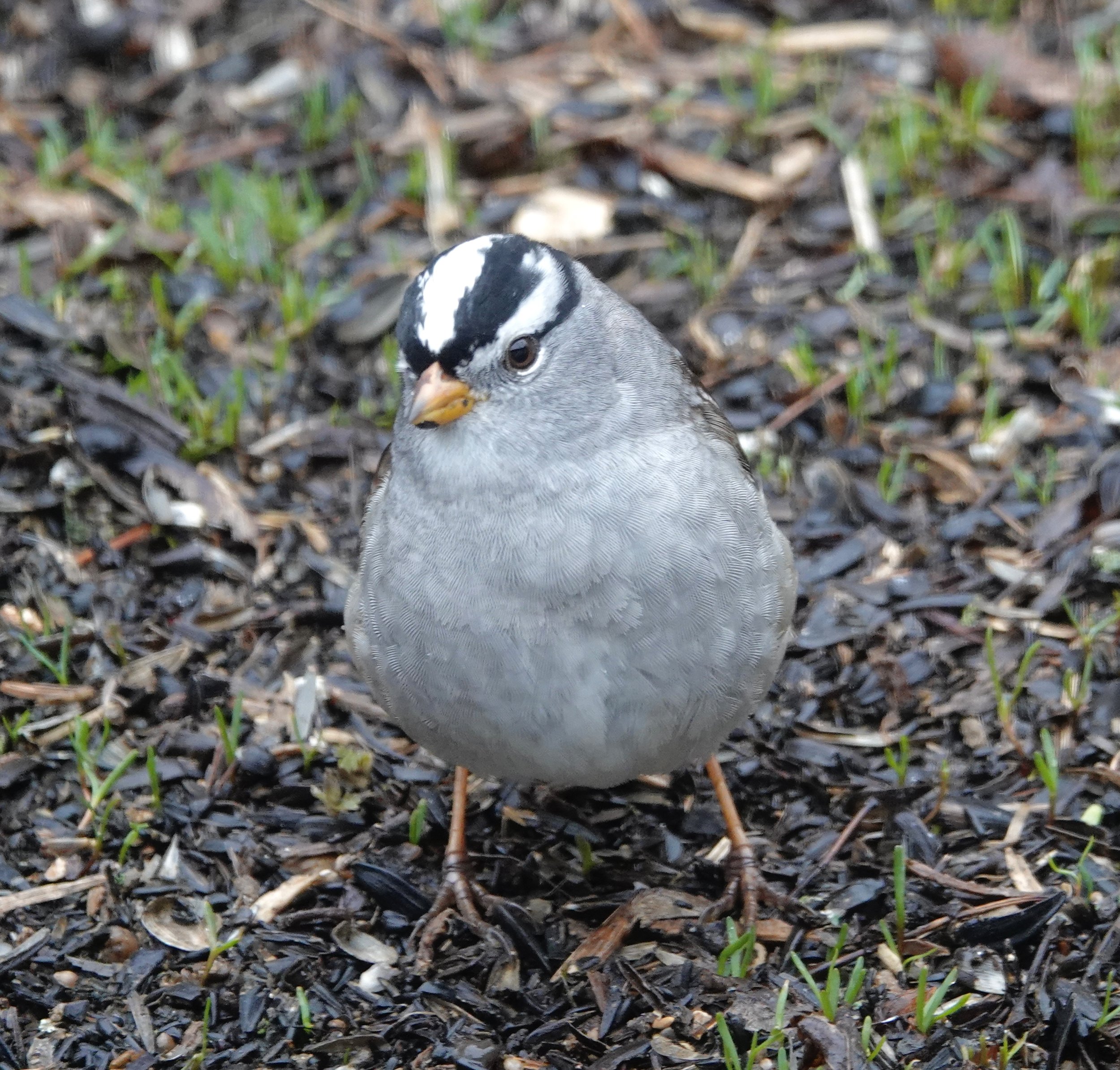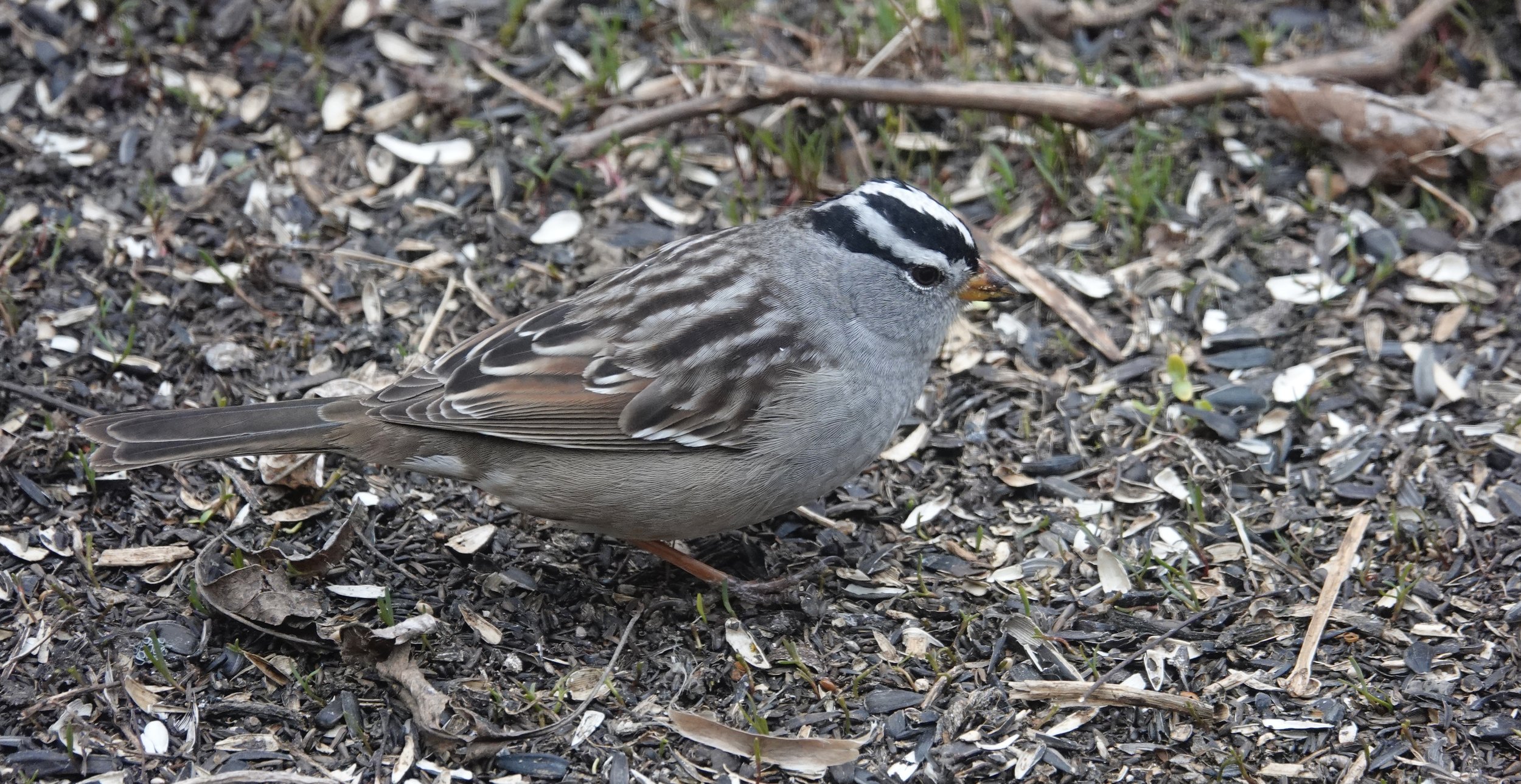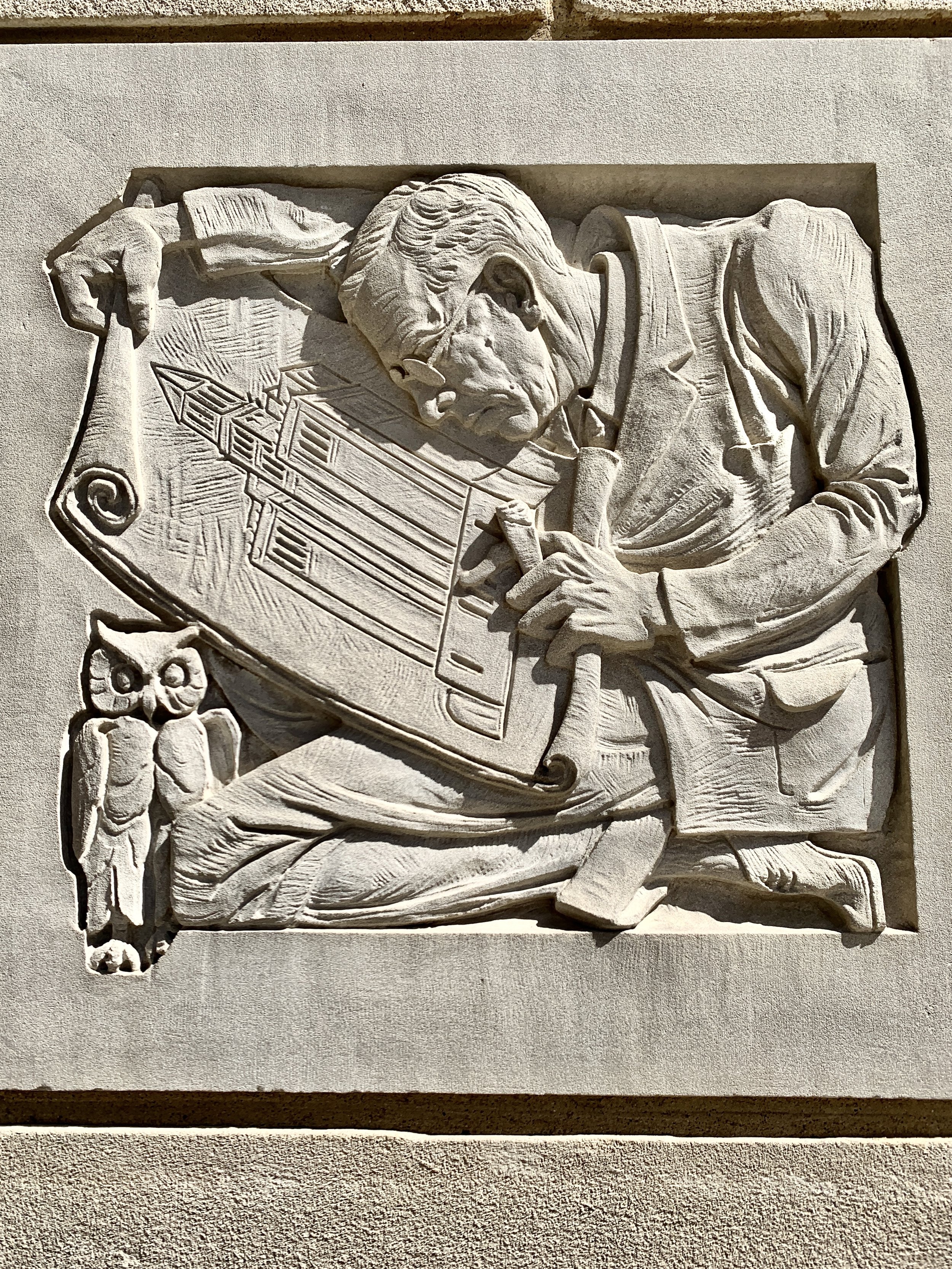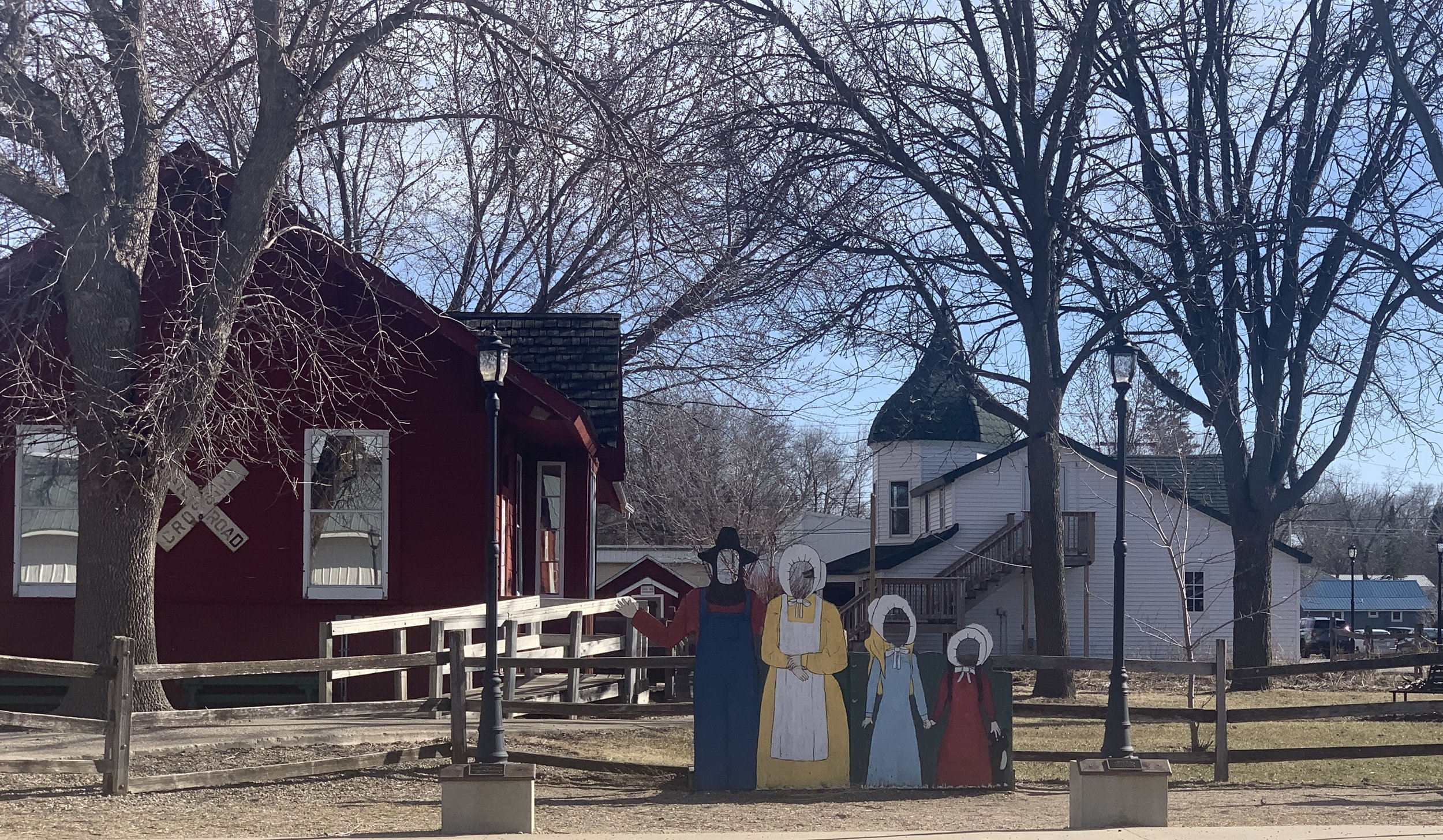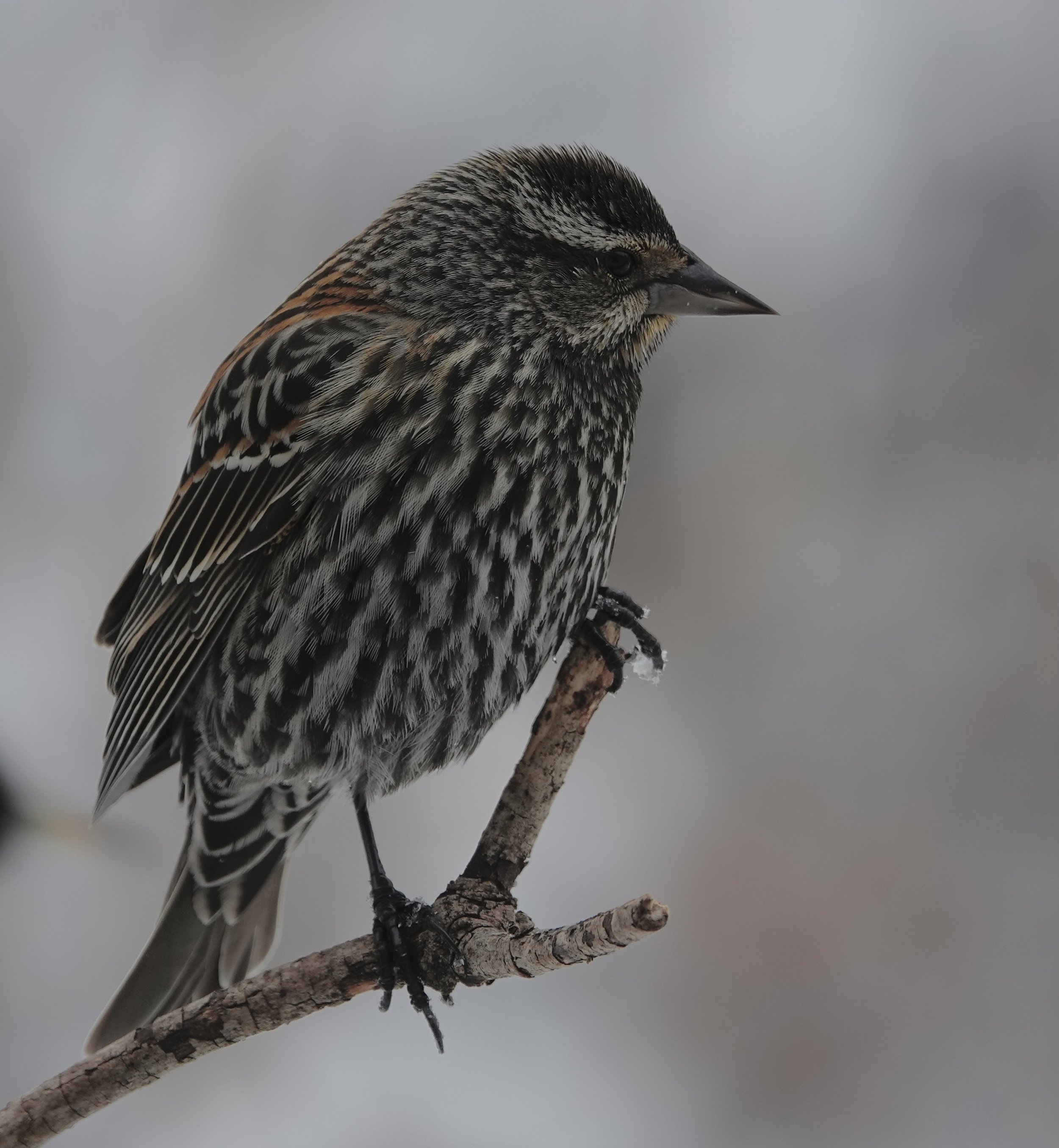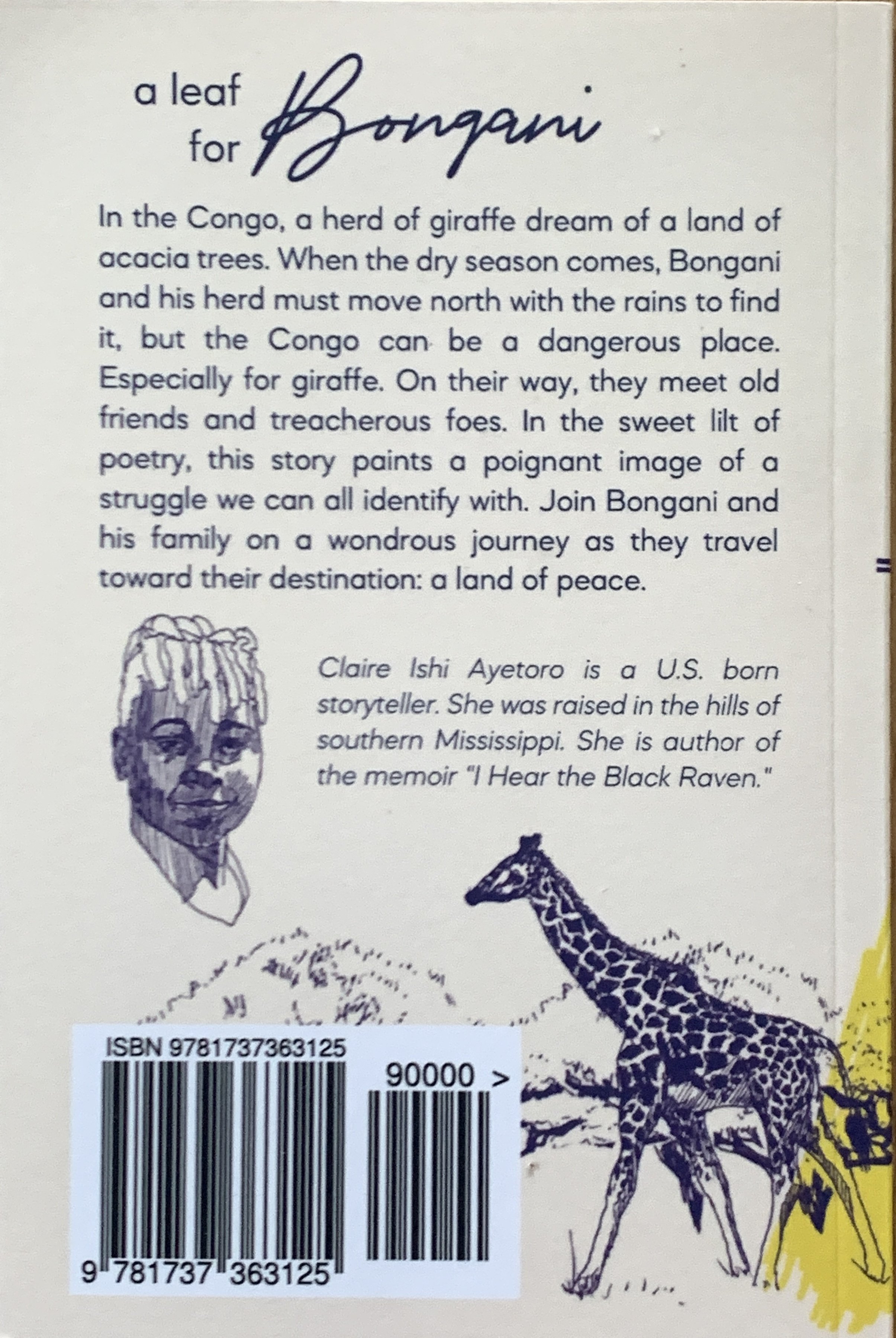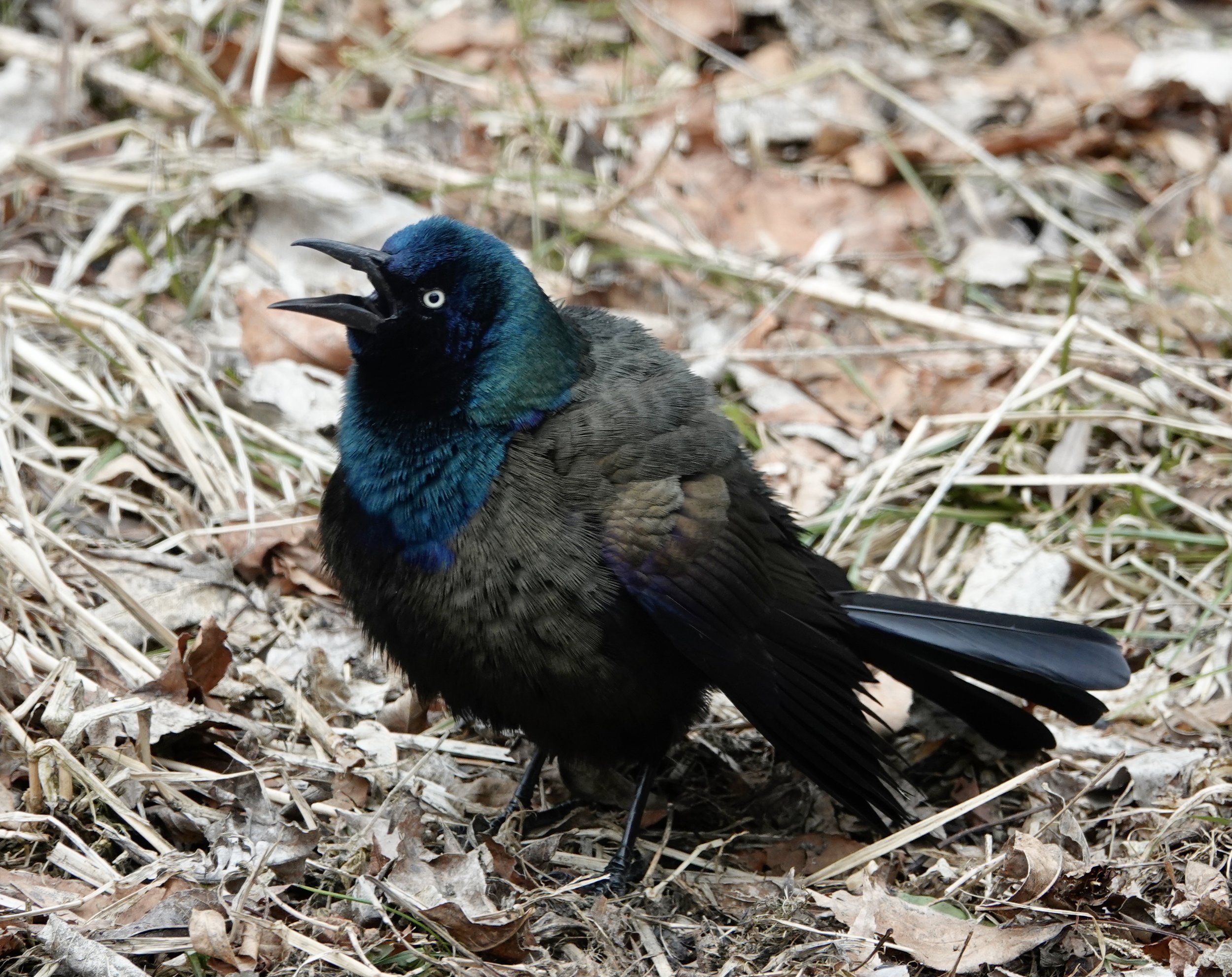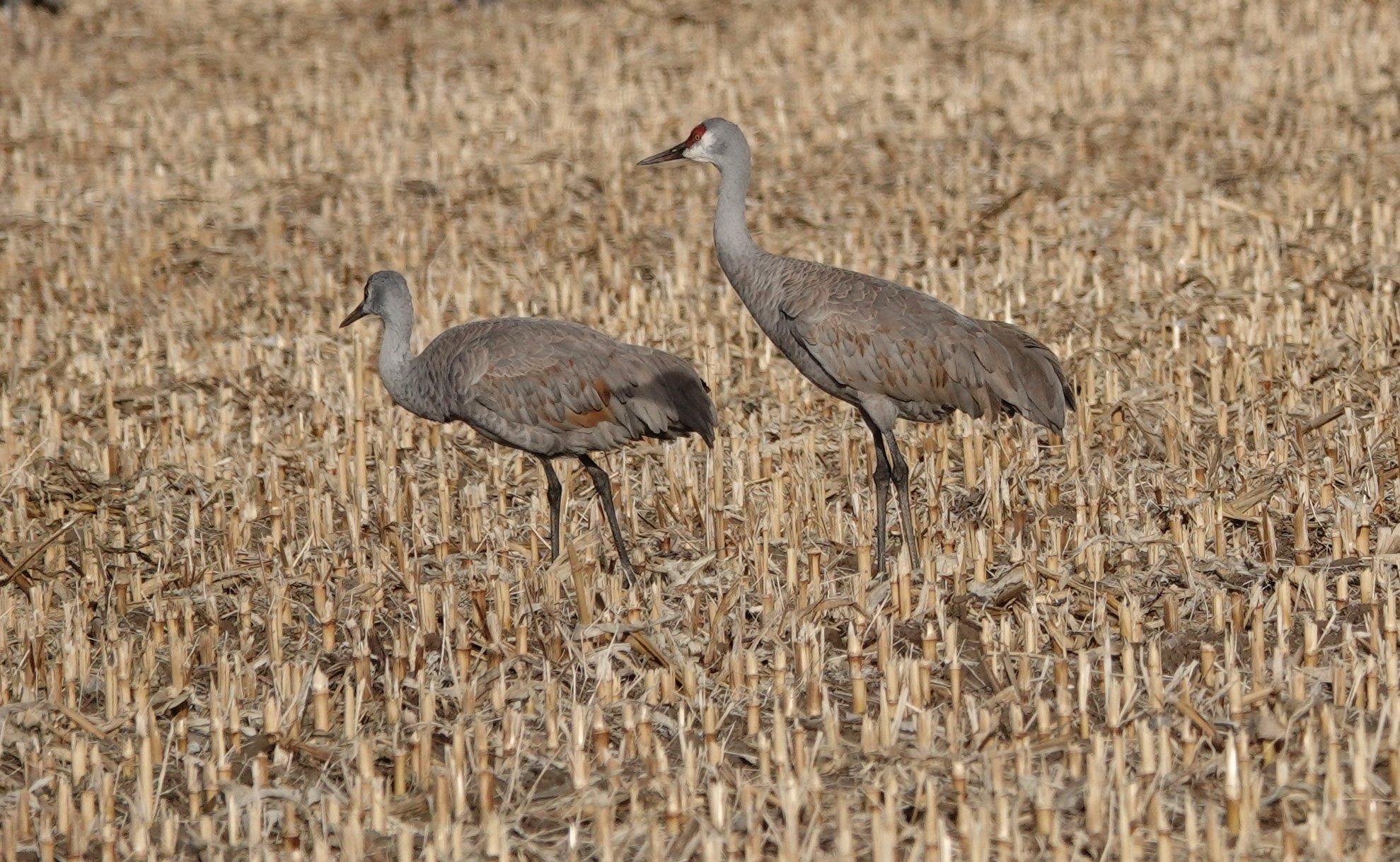It may be summer, but the Song Sparrow sings, “Hip; hip; hip hurrah boys; spring is here!” Photo by Al Batt.
The Ebony Jewelwing is a striking damselfly that preys upon mosquitoes, flies, small moths, mayflies and flying ants.
The Ebony Jewelwing is a striking damselfly that preys upon mosquitoes, flies, small moths, mayflies and flying ants.
Naturally
There were blinking bugs. Fireflies or lightning bugs are quiet fireworks. They prefer warm, humid environments, which means muggy June and July days are perfect for them. Look up and down around tall grasses or bushes and areas near water. A lawn could host fireflies. A firefly is an identity mark of summer and evokes wonder in those who see it.
The morning’s sweet chorus of early birds featured the incessant voice of a robin accompanied by drumbeats. Each woodpecker is a drummer, not a guitar player in the flock. Robins, catbirds and orioles splash in the water of the birdbath, showing Baptist tendencies. Robins, cardinals and other birds fight with their reflections in windows. Blue jays seem to understand the image isn’t a real bird. Magpies have been tested and found to understand mirrored birds. Someone commented on the plainness of the house sparrow. I couldn’t agree. I think they are handsome birds. A house sparrow doesn’t give a thought to what it’s wearing.
Deer walked through the yard like ballerinas. Thistles and milkweeds bloomed. Look for an increase in butterflies and grasshoppers. I’ve noticed gobs of foamy “spit” on the stems of plants—mostly yarrow and daisy. The spit is where young spittlebugs (froghoppers) grow up.
Crown vetch is a perennial plant widely planted along roadsides for erosion control and can spread into prairies, forest edges and riverbanks. Its stems trail over other plants and can grow 2-6 feet long. Crown vetch has tubular white to pink to lavender flowers that bloom from May through August. Crown vetch can cover other plants, spread vegetatively and cover acres of land. Outcompeting other plants reduces species diversity and habitat. As a legume, crown vetch can change nitrogen levels in soils, which can make it difficult for native plants to compete. Crown vetch is non-palatable to grazing animals. Birdsfoot trefoil was introduced to the U. S. for livestock forage and erosion control. It grows well in Minnesota and its yellow flowers are evident on roadsides. Foxtail barley, sometimes called squirrel-tail grass, is a common grass on roadsides. Its flowering spikes are attractive, silky and waving in the breeze.
Birds in the news
A group of African gray parrots was quarantined
together at a UK safari park when they taught each other how to swear. When the birds realized staff members were laughing at their swearing, they started laughing, too.
Q&A
“Do ants help peonies to bloom?” Folklore says ants tickle the buds to help the flowers open, but they will open without the presence of ants. The peonies provide nectar (food) for the ants and the ants protect the peonies from aphids and other harmful insect pests.
“How many litters does a rabbit have each year?” An eastern cottontail rabbit female is capable of having seven litters a year, but in Minnesota it’s likely to have only three, possibly four. Each year, about 80% percent of Minnesota's cottontail population dies from weather, predators and disease.
Bill and Patrice Thompson of Mantorville have a red-headed woodpecker coming to a feeder and asked for information on that bird in southern Minnesota. I did a Breeding Bird Survey in Freeborn, Mower and Steele Counties and was cheered by the red-headed woodpeckers I saw in all three counties. In Longfellow’s poem “The Song of Hiawatha,” Hiawatha gave the bird its red head. In Minnesota, they’re most commonly found in southern Minnesota. They prefer woodlands where the canopy is relatively open, there is a sufficient number of dead trees and dead limbs, and an abundant supply of acorns. It makes use of farmland woodlots and shelterbelts. Their numbers have dropped 6.07% per year in Minnesota since 1967. I’m seeing more than I did a few years ago.
“How do woodpeckers keep from getting concussions when hammering on a tree?” The Field Museum said that with each peck, woodpeckers absorb more than 10 times the force it would take to give a human a concussion. Woodpeckers have thick yet spongy skull bones that act as a helmet, there is a cushion of cartilage located where the skull meets the jawbone, powerful muscles deflect the brunt of the blow to the skull, the woodpecker’s brain is held tightly against its skull, and the hyoid bone wraps around its skull like a seatbelt that protects its brain. Woodpeckers have built-in goggles—sort of. They close their eyelids an instant before each strike, keeping eyeballs under pressure and protecting against splinters. Woodpeckers are designed to do what they do.
Thanks for stopping by
“When there is very little else left to believe in, one can still believe in an honest loaf of fragrant, home-baked bread.”—Anna Thomas.
“Speculation is perfectly all right, but if you stay there you've only founded a superstition. If you test it, you've started a science.”—Hal Clement.
Do good.
©Al Batt 2022
The northern flicker apparently has a goal of making as much noise as possible. It often drums on metal things. A heavy metal drummer. The black mustache stripe means this is a male. Photo by Al Batt.
One of my favorite flowers—the Canada Anemone. Some folks call this robust perennial the meadow anemone. I grow it in my yard and have never had the deer lunch on it.
One of my favorite flowers—the Canada Anemone. Some folks call this robust perennial the meadow anemone. I grow it in my yard and have never had the deer lunch on it.
Birding via the radio.


